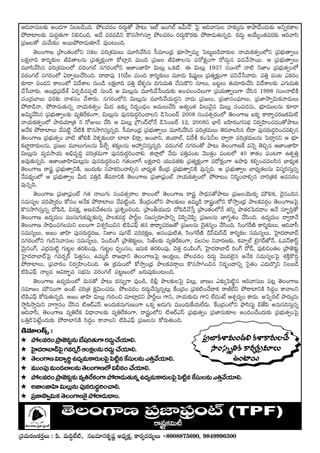P4
- 1. ¨¢??=~¡ãO?¨¢¨º*¡¦¡ë?¦¸¨¬~¡ã^?¡Þ?K?????x,P[O*??¡Ü?q¡Þ?¡Þ?#¡Þ?¡§?#~¡ã¡Þ^?¨²iOK??x_?=?O_?K??¡§?? ??¡ÜZ??¦Ð<??¡ÞQ?=Pq~??¨´=?¡§?¨¨¨ª#¡Þq[??¡Þ=O`?OK?^??O. ~??b - |?¡Ü?~¡ãOQ??¡§?¨¨¨ª `?k:12JH?¨¬|~¨¹2014,?¡§¡Â?O:H?H?f??¡Þ_??wH???r?Q¡°O_?,?¡§?#?H?O_?,=~¡ãOQ??¨°,?¨º.3Q?O.?¡ë?¦¸, ??¡Ü??¡Þ"¡Ý¡Þ?# ??¡§[??~? ! `¡Ý?OQ?} ~?RO U~¡ã?_?Ok. `¡Ý?OQ?} ~?RO?¡¯ <?? =~¡ã¡ë?¦¸ ?¡®_?`? ??¡§[?¡ë?¦¸ ^?H??O^?q¡Þ ??¡ë?¦¸<??, ¨¢?~?Ok =??`?O Z¡ë?¦¸?=. D ^???xH? =??"??¡§¡Þ?¡¦¡¤# Pk"??¡§¡Þ? rq`??#¡Þ h@=?OK?~¡ã¡Þ. D ^??? ^?¨¤?s ¨¢¨º?¡ë?¦¸?¡Þ ??¡§[?¡Þ K??¡Ü# g~?z`? ¨¢?~???¡ë?¦¸ `???y? `¡Ý?OQ?} ~???¨º¨¬x? U~??@¡ÞK???~¡ã¡Þ. WOH?H?"¡Ý¡¤?¡§? `¡Ý?OQ?} ~?RO W??? ¨¢??=~¡ãO H?@¨¬x"???x `¡Ý?OQ?} ^?¨¤?s ¨¢¨º?¡ë?¦¸?¡ë?¦¸ +¡§~¡ã`?¡Þ???¨¬~¡ã¡Þ. D +¡§~¡ã`?¡Þ#¡Þ `¡Ý?OQ?} ¨¢¨º?¡ë?¦¸?¡Þ, <?? =?Y?=¡ÞO?u H???¡ë?¦¸O@? K?O?^???Y~¨¹ ~?=?`? ?¡§?¡§? JOwH?iOz `¡Ý?OQ?} ~?R U~??@¡Þ H??¡§O Pk"??¡§¡Þ?#¡Þ #>?¨¬@ =?OK???~¡ã¡Þ. ??¡§e`?OQ? PO?^¨¨???¡§^??¨° ?¡§?#i??¨¨¨ª[# K?@¨¬O, 2014?¡¯x ??H?¦¤<? 91 ??¡§H?~¡ãO ¨¢??=~¡ãO ?¨¢¨º*¡¦¡ë?¦¸¨¬¡ë?¦¸ ?HO?^?O ?w<? ?¡ÜQ???¨° Wz?Ok. D ?¨¢¨º*¡¦¡ë?¦¸¨¬¡ë?¦¸ J??¡Þ? 90 ??`?O Y~¡ã¡Þ?#¡Þ `?"?¡Þ ?¨¨¨ªi?¨º?=¡Þx K¡Ý?¡Ü? *?f??¡Þ?¡§??^?#¡Þ ¨¢??=~¡ãO ?¨¢¨º*¡¦¡ë?¦¸¨¬ Wz?Ok. PO?^¨¨???¡§^??¨°?¡¯ WK???¡§?~¡ãO #¡ÞO_? H?H?<?_? =~¡ã¡ë?¦¸ ?¡§=??^?f~?# ^?j??¡Þ Q?¡Þ`????@¡Þ¨¬|_?^?~¡ã¡Þ?, |?¡§?¨¤?*?u ?¡§O?¡§¡Â? ?¡§i???=¡Þ?¡ë?¦¸ h~¡ãOkOK? ?¡§^??H?? H?O^? ^?^??¡§? 3 ?H?¦¤? Pk"??¡§¡Þ? ?H?¦¤=¡ÞOk Pk"???`?~¡ã ??¡§[? ?¨¢¨º}??#¡Þ |e???¨¬Ok. ?¨º=??¡Ü?H? =?~¡ã}H?O_?¡ë?¦¸ ¨¢¨º??_?¡Þ`?¡Þ#? ?HO?^? ??¡§?¨¨¨ª¡Þ`??O, `¡Ý?OQ?} ??¡§[? #¡ÞO_? ¨¢?~?@O =?¡§¡Þ?O^?x ?¨¨¨ª??¡ÞO`? *¡¦¡¤ ??¡§*??¨º?q¡ÞH? `¡Ý?OQ?} *¡¦¡¤ *¡¦¡¤ ??¡§*??¨º?q¡ÞH? `¡Ý?OQ?} ?¡§?¨¨?^¨¨??H?¦¤`? : ?¡§?e=?q¡Þ_?=¡Þk????, ??¡ÜZ??¦Ð ~?R J^¨¨??¡ë?¦¤¦¸?¡Þ =H???¡Þ : a._?.??~¡ã?,Z?¡®?Z?¡®¨¬ H?g¡Þ+¡§<? PeO_???? =?r K¡Ý¡¤~¡ã?<? Q?^??~¨¹,??¡ÜZ??¦Ð =?=?¨º¡Â?¡§H? J^¨¨??¡ë?¦¤¦¸?¡Þ ?¨¢?II?¡§?~¡ãQ?¨¢¨º?¨°,??¡¤?^?~???^? ??O?@?¨° ???x=i?? ?¨¨¨ª??¡§uH?$+¡§?=?i?,`¡Ý?OQ?} ??¡§*? ?¡§q¡Þu #?=??¡§H?$+¡§?, ??¡ÜZ??¦Ð ~?R ??¡§^¨¨?#H?~¡ã?^?i¡Ö z¡ë?¦¸?_?¡Þ??¡§?¨¨?H?~¨¹, ??¡ÜZ??¦Ð ~?R L¨¢¨º^¨¨??¡ë?¦¤¦¸?¡Þ D?¡§O<?~???¡Þ},J?¡Ü??¨¬O¨° ?¨¢?????¡§~¨¹, ?H.???. Z.#i?O?¡§??~_?¡è,??¡ÜZ??¦Ð ~?R L¨¢¨º^¨¨??¡ë?¦¤¦¸?¡Þ ?¨¢?IIJ#?~¨¹M?<?,Z?¡®?Z?¡®¨¬a?¡Ü =??¡Ü?O ???¡§O¨° H?h?#~¨¹ Jx???¨¬~¡ãl`?,`¡Ý?OQ?} ~¡ãK?~??u ~¡ã=¡Þ}???H?¦¤???¡Þ?,`?¡Þ_?¡ÞO^¡Ý|? ~?R H?~¡ã?^?i¡Ö [O[~¡ã?~¡ã"?¡Þ+¦Ð??|¡Þ, `¡Ý?OQ?}x~???¡Ü`?¡Þ? ¨¢??~¡ãO a.~¡ã=?^?q,??¡ÜZ??¦Ð l??? J^¨¨??¡ë?¦¤¦¸~??¡Þ "¡Ý¡Þ??¡§uJ~¡ã¡Þ}¨¹¡ë?¦¸=?~¨¹,ZZ?¦Ð??? Jk¨¨H?~¡ã ??¡§uxk¨¨ U_?¡Þ =¡ÞO_????#¡Þ PO?^¨¨???¡§^??¨°?¡¯ H?e???¨º~¡ã¡Þ. D K?@¨¬ ?¡§=~¡ã} ^??~? <??¡ÞQ?¡Þ ~???¨º¨¬?~?# `¡Ý?OQ?}, PO?^¨¨???¡§^??¨°, K¨¨?f??¦ÐQ?_?, X_??¨º?, ~???¨º¨¬?¡ë?¦¸ K¡ÝOk# <??¡ÞQ?¡Þ ?H?¦¤? =¡ÞOk Pk"??¡Ü Pk"???`?~¡ã ??¡§[?¡Þ [??¡§=?k¨¨ J??¡Þ? ?¡§i?¡Ü¡Âu U~¡ã?_?Ok. D ?¡§i?¡Ü¡ÂuH? H?~¡ã}"¡Ý¡Þ?# H?O??Q?¦Ð, a*??¡Ü?¡Þ H?~???~¨° H?O??h?¡ë?¦¸ ^?¨¤?~¡ã¡Þ?¡ÞQ?=?i H?h?¡§ =?#g??¡Þ q?¡Þ=?¡Þ ¨¢¨º`??~?¡Ü ~?*??OQ?x? Pk"??¡® K??¨¬?#¡Þ L??O??¡Ü¡Þ?¡§¡Þ? D ??¡§¡Þ¡¯~¡ã"¡Ý¡Þ?# <?~?xH? X_?Q??¨¬~¡ã¡Þ. D <?~¡ãO?¡¯ K?O?^???|¡Þ <????_?¡Þ <???¡ÞH?`??O?¡¯x `¡Ý?¡ÞQ?¡Þ^???O ¨¢¨ºs¨¬ J@¡Þ PO?^¨¨??¡¯#¡Þ, W@¡Þ `¡Ý?OQ?}?¡¯#¡Þ ¨¢¨º?¡Þ?¡§OK?¡Þ¡ë?¦¸O@¡ÞOk. `¡Ý?OQ?} `¡Ý?¡ÞQ?¡Þ^???O <???¡Þ¡ë?¦¸?¡Þ WOH? H??¨º?O?^¨¨?, ^??¡Ü_? =~???¡ë?¦¸ ??=K???¡Þ_?O `??¡§? `¡Ý?OQ?} ??¡§[??¡§@? H?h?¡§ ?¡§?¨¬O?¡§???¡ë?¦¸O_? =?=?¡§?i?¡§¡Þ?<??~¡ã¡Þ. =¡Þ~?"¡Ý¡¤?¡§? ?¨¢¨º*¡¦¡ë?¦¸¨¬#¡Þ =?u?~H??¡§¡Þ?#?@¡Þ? H?x??¡§¡Þ?#? ¨¢¨º~¡ã?"¡Ý¡ÞO@s ~?[H???¡Þ¨¢¨ºs¨¬?¡Þ ^¨¨??O^??q^¨¨?<??#¡Þ ¨¢¨º??¡§¡Þ?<??~?. ¨¢¨º?H? ¨¢¨ºs¨¬?¡Þ U ~¡ã??¡§O?¡¯ =?<?? ¨¢¨º?H?=~¡ã? ??¡§?¡Ý?[#O =??`?"?¡Þ H?¨¢¨º_?¡Þ`?¡ÞOk. D q+¡§??¡ÞO *?~¡ã?O_? ~?RO U~??@¡Þ H?~¡ã¡ë?¦¸ U~¡ã?_?# '*?~¡ã?O_? =?H?? "¡Ý?~¡ã?¡ª J<? ~?[H???¡Þ¨¢¨ºs¨¬ ??Q? `¡Ý?OQ?} ~?R ?¡§q¡Þu q+¡§??¡ÞO?¡¯#¡Þ "?i JO`?~¡ã?`? Z*¡¦O_? K??? ?¡§?+¡§¨¬OQ? ~?A~?A¡ë?¦¸ =¡ÞiO`? J~¡ã¡ÂO J=?`?¡ÞOk. `¡Ý?OQ?} ??¡§[? #¡ÞO_?, Pk"??¡Ü ?¡§=?[O #¡ÞO_? f?= =?u?~H?`? Z^?¡Þ~??=??¡Ü=?¡§¡Þ?O^?x ?Q??¡Ü?Oz# `¡Ý?OQ?} ~?R ?¡§q¡Þu ??¡§?¨¨¨ª¡Þ`??O XH? ~?A |O^?¡Þ¡ë?¦¸ ?¡Ü?¡Þ?¡§?xz? <????¡Þ?¨º¡Â<?x? P???~??¨º?=¡Þx ??¡§H??Oz K?`?¡Þ?¡Þ ^?¡Þ?¡Þ?¡§?¡ë?¦¸#?q. Jk¨¨H?~¡ãO?¡¯H? ~?H?=?O^?¡Þ ¨¢??=~¡ãO ?¨¢¨º*¡¦¡ë?¦¸¨¬¡ë?¦¸ =?u?~H?OQ? ?¨¢¨º}??¡Þ Ji??¨º?=¡Þx Q?Oc¨¨~¡ã L?¡§<???¨º?¡Þ K??¡Ü# ?P~¨¹Z?¦Ð Q?^¡Ý?<¡ÝH??Q?<? _?*¡¦¡¤<? =?~¡ã¡Þ? JO@?, <????¡Þ¨¢?~?@=¡ÞO@? =?@=?i?Ok. ?¡Ü?¡ÜZO, ?¡Ü?¡ÜS ¨¢¨ºs¨¬?¡Þ PO?^¨¨??¡¯ XH?=?@, `¡Ý?OQ?}?¡¯ XH?=?@ =???_?¡Þ`?¡Þ<??~?. ?¡Ü?¡ÜZO ¨¢¨ºs¨¬ `?# x[?¡§?~¡ã?¨¢¨ºx? K???¡Ü?¡§?? ¨¢??=~¡ãO ?¨¢¨º*¡¦¡ë?¦¸¨¬ =?u?~H? ¨¢?~?@O?¡¯ H?^?¡Þ?¡Þ`?¡Þ#? ??¡§[???¡¤ f?= x~¡ã?¨´O^¨¨?O ??¡§?¡Ý?y?¡§?? ^?_?¡Þ?¡ë?¦¸ ??¡¤`?O ?¡Ü^?¨²?¡§_?@O "?i ~?[H???¡Þ ?¡§??¨¨?"?xH? x^?~¡ã¡Ö#O. WH? ~?[H???¡Þ *¡¦Z?¡Ü "¡Ý?^??#¡ÞO_? `¡Ý?OQ?}?¡¯x Pk"??¡Ü ??¡§[? ?¡§@? H?x, Pk"??¡Ü ?¨¢¨ºO`???¡¯ J¨¢¨º~¡ã"¡Ý¡Þ?# ?¡§O?¡§^? ^??¡Ü_? ?¡§@? H?x ?¡§?+¡§¨¬"¡Ý¡Þ?# "¡Ý¡¤Yi ??^?¡Þ. ¨¢??=~¡ãO ?¨¢¨º*¡¦¡ë?¦¸¨¬ x~??}?x? ??+¡§~¡ã`?¡ÞQ? ~¡ã^?¡Þ?K???¡Þ_?O`??¡§? =¡Þ~?H? ??¡§`??=????¡Þ J=H???O ??^?x "?k?¡§?? ¨¢?~?@O K??¡ÜOk `¡Ý?OQ?} ??¡§*? ???¡§O¨°, ??¡§*??¡§O??¡§??¡Þ, xM?~¡ã?~?# `¡Ý?OQ?} "?^?¡Þ?¡Þ =??`?"?¡Þ. =?O?¡§?=¡ÞO_????¡Þ uiy `¡Ý?OQ?}?¡¯ H??¨¢¨º?<??, ?¨¢¨º*¡¦¡ë?¦¸¨¬ ~¡ã^?¡Þ? H?"??<?? <?_??O x<?^?O`? J??+¡§ `¡Ý?OQ?} Jd? ?¨¨?~¡ã`? ??¡§[??¡Ý?H?? ~?r??x ¨¢?~?@"?¡Þ =?~¡ã?O `??¡§? _?*¡¦¡¤<? =?~¡ã¡Þ?? =?? Xi?Q^?=?O_?^?¡Þ. ??¡§[? ??¡§?¡Ý?[#O H?~¡ã¡ë?¦¸ U~¡ã?_?# `¡Ý?OQ?} ??¡§*? ???¡§O¨° ??¡§*??¨º?q¡ÞH? `¡Ý?OQ?} ^??~? =??`?"?¡Þ D ?¨¢¨ºO`?O?¡¯ ??¡§[? ?¡§=¡Þ?¡§??¡Þ ?¡§i?¨º?~¡ãO J=?`???¡Þ<? ??¡¤^?¨²OuH? ?¡§?<?k`? ~?[H???¡Þ ??¡§K?~¡ãO H?#?¨ºyOzOk `¡Ý?OQ?} ??¡§[? ??¡§*??¨º?q¡ÞH? ?¡§?¡ë?¦¸?? H?~¡ã¡ë?¦¸ x~¡ãO`?~¡ãO ¨¢?~?_?Ok. `¡Ý?OQ?} SH?? H?~??K?~¡ã} H?q¡Þ? U~¡ã?_?# ?¡§O=`??~¡ãO?¡¯<? ¨¢??=~¡ãO ?¨¢¨º*¡¦¡ë?¦¸¨¬#¡Þ x~¡ã??O^?OQ? =?u?~H?OK?_?O`? ¨¢¨º@¡Þ ¨¢??=~¡ãO ?¨¢¨º*¡¦¡ë?¦¸¨¬#¡Þ ~¡ã^?¡Þ?K?????x JH?¨¬|~¨¹ 26, 2006 ?¡§OII# Y=¡Þ?O ?¡§@¨¬}O?¡¯ |?¡Ü?~¡ãOQ??¡§?¨¨¨ª x~¡ã??¡Ü?Oz
- 2. Pk"??¡§¡Þ?¡ë?¦¸ JO_?Q? x?|_?Ok. ¨¢??=~¡ãO ~¡ã^?¡Þ?`? ¨¢¨º@¡Þ '[?¨° [Oy?¨° [g¡Þ<?¡ª ??¡¤ Pk"??¡§¡Þ? ?¡§?¡ë?¦¸?#¡Þ H?¨¢¨º_?O^?¡Þ¡ë?¦¸ Jx?~¡ãH?? ¨¢?~???¡ë?¦¸ =¡Þ^??`?¡ÞQ? xezOk. J^? =~¡ã=_?x H?#?¨ºy?¡§?? ¨¢??=~¡ãO ~¡ã^?¡Þ?H?~¡ã¡ë?¦¸ ¨¢?~?_?¡Þ`?¡Þ#?k. ~¡ã^?¡Þ? J??¡Þ?O`?=~¡ã¡ë?¦¸ Pk"??¡Ü ??¡§[?`? =¡Þ"?¡ÞH?O J~?¨¢?~?_?¡Þ`??<? =?O@¡ÞOk. `¡Ý?OQ?} ?¨¢¨ºO`?O?¡¯x ?¡§H?? ?¡§i???=¡Þ?¡Þ =??¡Ü"??¡Ü# ?¡®=?O?^¨¨? ?¨¨¨ª??¨º?=¡Þ? ??@¡Þ¨¬|_?^?~¡ã¡Þ? <???¡ÞH?`??O?¡¯x ??¡§?¨¨¨ª¡Þ`???¡Þ ?H?¦¤??k H?i?¡ë?¦¸? rq`??#¡Þ ??¡§`??H?¦¤OQ? H???k =¡ÞOk ??¡§[? rq`??#¡Þ ?¡§~?H?¦¤OQ? ~?_?¡Þ¡è# ?¡§_?"??¨º~?. P ??¡§?¨¨¨ª¡Þ`???¡Þ =??¡Ü"??¡Ü# ?¡§i???=¡Þ??¡¯ =~¡ãOQ??¨° #Q?~¡ãO?¡¯x P*?O*??¡Ü? q¡Þ?¡Þ? XH??. D q¡Þ?¡Þ? 1937 ?¡§OII?¡¯ <?? x*?O ??¡§?¨¨¨ª¡Þ`??O?¡¯ =~¡ãOQ??¨° #Q?~¡ãO?¡¯ U~??@¡ÞK??¡ÜOk. ^?^??¡§? 10"?? =¡ÞOk H?i?¡ë?¦¸?¡Þ =?_?¡Þ +¡Ü?¡§?¨¬?¡Þ ??¡§`??H?¦¤OQ? ?¡§xK???"?~¡ã¡Þ. ?¡§u? ?¡§O@ ZH?~¡ãO ¡ë??_? ?¡§O_?x H??O?¡¯ q^???? #¡ÞO_? ?H?¦¤??k ?¡§u? ??¨¤?¡ì#¡Þ kQ?¡Þ=¡Þu K??¡§¡ÞH?x #??¡Þ, |@¨¬?¡Þ `????~¡ã¡ÞK??¡Ü q^????¡ë?¦¸ ZQ?¡Þ=¡Þu K???"?~¡ã¡Þ. PO?^¨¨???¡§^??¨° U~¡ã?_?#?¡§?? #¡ÞO_? P q¡Þ?¡Þ?#¡Þ =??¡Ü"???O^?¡Þ¡ë?¦¸ JOK??OK¡Ý?¡ÞQ? ??¡§??¡Þ`???¡ÞQ? K??¡Ü# 1998 ?¡§OII<??H? K?O?^???|¡Þ =~¡ã¡ë?¦¸ <???#O K???~¡ã¡Þ. #Q?~¡ãO?¡¯x q¡Þ?¡Þ?#¡Þ =??¡Ü"???¡Þ^??x <?_?¡Þ ??¡§[?¡Þ, ??¡§*??¡§O??¡§??¡Þ, ??¡§*??¨º?q¡ÞH?"?^?¡Þ?¡Þ ¨¢?~?_?<?, ¨¢?~?_?¡Þ`?¡Þ#? <???¡ÞH?`??O g¡Þ^? L¡ë?¦¸? x~¡ã?O^¨¨?O J=¡Þ?¡ÞK??¡Ü J`??O`? q?¡Þ"¡Ý¡¤# q¡Þ?¡Þ? ?¡§O?¡§^?#¡Þ, ?¨¨¨ª?=??#¡Þ ¡ë??_? Jq¡Þ?"??¡Ü# ??¡§?¨¨¨ª¡Þ`???¡ë?¦¸ =?u?~H?OQ?, q¡Þ?¡Þ?#¡Þ ?¡§?#~¡ã¡Þ^?¨²iOK??x _???O|~¨¹ 2008 ?¡§O=`??~¡ãO?¡¯ `¡Ý?OQ?} SH?? H?~??K?~¡ã}H?q¡Þ? <???¡ÞH?`??O?¡¯ ¨¢¨º^?????`? 5 ~?A?¡Þ K??¡Ü P q¡Þ?¡Þ? ?Q¡°O_??¡¯<? _???O|~¨¹ 12, 2008# ?¨¨?s |?¡Ü?~¡ãOQ??¡§?¨¨¨ª x~¡ã??¡Ü?OK?_?O`?¨¢¨º@¡Þ J<?H? ¨¢?~???¡Þ K??¡§?¨¬ <??H? H?#?¨ºy?¡§¡Þ?#?k. ?¡®=?O?^¨¨? ??¡§?¨¨¨ª¡Þ`???¡Þ =??¡Ü"??¡Ü# ?¡§i???=¡Þ?¡Þ `¡Ý~¡ã"???¡Ü# ??^? ?¡§?#~¡ã¡Þ^?¨²iOK?=e?# `¡Ý?OQ?} ??¡§?¨¨¨ª¡Þ`??O "?? *¡¯eH? "¡Ý¨¤?¡ì¡ë?¦¸O_? ?? a~??, JO??x, lO^??¨°, q^?j H?O??h? ^??~? ?¡§i???=¡Þ?#¡Þ ??_??#x P ?¨¨¨ª? H????^?~¡ã¡Þ?#¡Þ, ??¡§[? =??¡ÞQ?¡Þ?#¡Þ ?¡®??? ??¡ë?¦¸??#¡Þ P?¡§??x?¡§¡Þ?#?k. =~¡ãOQ??¨° #Q?~¡ãO`? ¨¢¨º@¡Þ `¡Ý?OQ?}?H =<¡Ý? `¡Ýz?# P*?O*??¡Ü? q¡Þ?¡Þ?#¡Þ =?=?¨º??¡Þ Ja¨¨=$k¨² ?¡§i???=¡ÞQ? ?¡§?#~¡ã¡Þ^?¨²iOK?e. l????¡¯ <?_?¡Þ ?¡§u??¡§O@ "¡Ý?`??O ?¡§O@?¡¯ 40 ??`?O ?¡§O@Q? L`??u? J=?`?¡Þ#?k. P*?O*??¡Ü?q¡Þ?¡Þ?#¡Þ ?¡§?#~¡ã¡Þ^?¨²iOz Q?`?O???Q ?H?¦¤??k ???=`?¡ë?¦¸ ??¡§`??H?¦¤OQ? ?¡§~?H?¦¤OQ? L¨¢¨ºk¨¨ H?e?OK?=??¡Ü# ??^¨¨??`? `¡Ý?OQ?} ~?R ??¡§?¨¨¨ª¡Þ`??xH?, WO^?¡Þ¡ë?¦¸ ?¡§?¡§?H?iOK?e?# ??^¨¨??`? ?HO?^? ??¡§?¨¨¨ª¡Þ`??xH? =?#?k. P ??¡§?¨¨¨ª¡Þ`??? ??^¨¨??`??#¡Þ q?¡§?i?¡§¡Þ?#? <??¡§^???O?¡¯ P ??¡§?¨¨¨ª¡Þ`??? g¡Þ^? =u?_? `?=_?xH? `¡Ý?OQ?} ??¡§*????¡§O¨° <???¡ÞH?`??O?¡¯ ¨¢?~?@O xi?OK?e?# K?i?`?H? J=?¡§~¡ãO =?#?k. `¡Ý?OQ?} ??¡§*????¡§O¨° Q?`? <??¡ÞQ?¡Þ ?¡§O=`??~?? H??O?¡¯ `¡Ý?OQ?} ~?R ?¨º^¨¨?#`?¨¢¨º@¡Þ ??¡§[??¡Ý?H?? =¡Þ?eH?, ^¡Ý¡¤#Ok# ?¡§=¡Þ?¡§?? ?¡§i?¨º?~¡ãO H??¡§O J<?H? ¨¢?~???¡Þ K??¡§?¨¬Ok. ?HO?^?O?¡¯x ¨¢¨º?¡ë?¦¸?¡Þ L=¡Þ?_? ~?RO?¡¯x H??¨º?O?^¨¨? ¨¢¨º?H?=~¡ã?O `¡Ý?OQ?}??¡¤ H?#?¨ºy?¡§¡Þ?#? ^??¡Ü_?, q=H?¦¤, J}z"?`??#¡Þ ??¡§t?OzOk. ?¨¢¨ºOf???_?¡Þ ^??¡Ü_?K???? ?¨¢¨ºO`?O?¡¯<? `?x? ¨¢¨º`?~¡ã??_?^?O J<? ?¡§??¨´i?`? `¡Ý?OQ?} L^??=¡ÞO =??¡§¡ÞQ?¡ÞH??¡§??¡ë?¦¸#? ¨¢¨º?H?=~¡ã? ¨¢¨ºs¨¬? x[?¡§?~¡ã?¨¢¨ºx? q?¡Ü?K¡Ý?¡Ü? ??¡§[?#¡Þ *?Q?$`?O K??¡ÜOk. L^??=¡ÞO ^??~?<? `¡Ý?OQ?} ?¨ºk¨¨OK?Q??=¡Þx |?OQ? q????¡ÜOz# ??¡ÜZ??¦Ð `?# H?~??K?~¡ã}`? ??¡§[?#¡Þ K¡Ý¡¤`?#?O K??¡ÜOk. ?¡ÜOQ??~}? H?i?¡ë?¦¸?¡Þ, Pk"??¡® ?¡§=¡Þ?¡§??¡Þ, J[O *??¡Ü? ?¡§?#~¡ã¡Þ^?¨²~¡ã}, x*?O +¡§¦ÌQ?~¨¹ ?¡§i~¡ãH?¦¤}, J?¡§O??¡§¡Þ?`?, ?¡ÜOQ??~}? _??¦Ðq¡Þ?¦Ð_? H?i?H?? ?¡§=¡Þ?¡§??¡Þ, ??¡¤?^?~???^? #Q?~¡ãO?¡¯x Q?¡Þ_???"??¡§¡Þ? ?¡§=¡Þ?¡§??¡Þ, ??O_?OQ¡Æ ?¨¢¨º*¡¦¡ë?¦¸¨¬?¡Þ, ??*¨°?¡ë?¦¸ =?u?~H?OQ?, =??¡§? x"?~¡ã}¡ë?¦¸, H?"???¨° >¡¦?Q?~¨¹*¡¯<?, F?¡§<?H??¦Ð¨¬ "¡Ý¡Þ?xOQ¡Æ, Z?~¡ã=¡Þ?¨¬ Q?¡Þ@¨¬? `?~¡ãeO?¡§?, Q?¡Þ@¨¬? ^¨¨??O?¡§O, W?¡§¡ÞH? `?~¡ãeO?¡§?, K¡Ý`?? _?O?¡ÜOQ¡Æ, ??¡¤?^?~???^? iOQ¡Æ ~?_?, ?¡§?ezO`?? ?¨¢¨º*¡¦¡ë?¦¸¨¬ ??¡¤?^?~???^???¡¤ Q?=~¡ã?~¨¹ ??`??#O, L=¡Þ?_? ~?[^¨¨?x `¡Ý?OQ?}??¡¤ POH?¦¤?¡Þ, ¨¢??=~¡ãO ~¡ã^?¡Þ? "¡Ý?^??¡¦¡¤# J<?H? ?¡§=¡Þ?¡§????¡¤ ??H??H?k? ¨¢?~???¡Þ, ??¡§K?~¡ãO x~¡ã??¡Ü?OzOk. D ?H?=¡ÞO?¡¯ H??¨º?O?^¨¨? ¨¢¨º?H?=~???¡Þ H?#?¨ºyOz# x~¡ã?¨´O^?x? ??¡¤`?O Z^?¡Þ~??x x?|_? ??¡ÜZ??¦Ð <???= Pq~??¨´= ?¡§?¨¨¨ª#¡Þ =~¡ãOQ??¨° ?¡§@¨¬}O?¡¯ [~¡ã¡Þ?¡§?¡ë?¦¸O@¡ÞOk. `¡Ý?OQ?} L^??=¡ÞO?¡¯ =¡Þ#`? ¨¢¨º@¡Þ ^?#¡Þ?Q? =?O_?, _?b? ¨¢¨º?¡ë?¦¸???¡¤ q?¡Þ?, ??}O Z¡ë?¦¸????¨¬# Pk"??¡§¡Þ? ?¡§@? `¡Ý?OQ?} ?¡§=?[O =¡Þ?#OQ? LO>? K?i?`? H?¦¤q¡ÞOK?^?¡Þ. ¨¢??=~¡ãO ~¡ã^?¡Þ?K??¡§¡Þ?#?@¡Þ? ?HO?^?O ??¡§H??OK?^?H? ~?r??x ¨¢?~??xH? ?¡Ü^??O H?"??x ??¡ÜZ??¦Ð H?~¡ã¡Þ`?¡Þ#?k. J[O *??¡Ü? q¡Þ?¡Þ? Q?¡ÞiOz =???_?x ¨¢¨ºs¨¬?¡Þ Q?x, <???¡Þ¡ë?¦¸_?¡Þ Q?x ??_?O>? P???~¡ã?O H?^?¡Þ. J???~¡ã?¨° ¨¢¨º~¡ã¡Þ?#¡Þ ?¨º¡Â?¡Ü?¨º?=¡Þx "?Q??#O K??¡Ü# ?P~¨¹Z?¦Ð JO^?¡ÞH?#¡ÞQ?¡Þ}OQ? XH?? J_?¡ÞQ?¡Þ =?O^?¡Þ?H??¡Þ??^?¡Þ. ?HO?^?O?¡¯x ¨¢?¨º?¡Ü?¡§¡Þ¨¬ a*??¡Ü J#¡Þ?¡§i?¡§¡Þ?#? Pk"??¡®, `¡Ý?OQ?} =?u?~H? q^¨¨?<??¡ë?¦¸ =?u?~H?OQ?, ~?RO?¡¯x ?P~¨¹Z?¦Ð ??¡§?¨¨¨ª¡Þ`??O ??¡§*?#¡Þ¡ë??? JOkOK?O^?¡Þ¡ë?¦¸ ??¡§?¨¨¨ª¡Þ`??O??¡¤ Xu?_???>?¨¬O^?¡Þ¡ë?¦¸ ¨¢?~??xH? ?¡Ü^??O H?"??x ??¡ÜZ??¦Ð ??¡§[?#¡Þ H?~¡ã¡Þ`?¡ÞOk. _?=?O_?? : ? ¨¢??=~¡ãO?¨¢¨º*¡¦¡ë?¦¸¨¬#¡Þ??+¡§~¡ã`?¡ÞQ?~¡ã^?¡Þ?K????e. ? ??¡¤?^?~???^???¡¤Q?=~¡ã?~¨¹POH?¦¤?#¡Þ~¡ã^?¡Þ?K????e. ? `¡Ý?OQ?}q^??i¡ÂL^??=¡ÞH?~¡ã¡Þ???¡¤???¨¬#?H?¡§¡Þ?#¡ÞZu?"????e. ? =?O?¡§?=¡ÞO_????#¡Þ`¡Ý?OQ?}?¡¯qb#OK????e. ? ¨¢??=~¡ãO?¨¢¨º*¡¦¡ë?¦¸¨¬¡ë?¦¸=?u?~H?OQ?¨¢?~?_?¡Þ`?¡Þ#?L^??=¡ÞH?~¡ã¡Þ???¡¤???¨¬#?H?¡§¡Þ?#¡ÞZu?"????e. ? J*?O*??¡Ü?q¡Þ?¡Þ?#¡Þ?¡§?#~¡ã¡Þ^?¨²iOK?e. ? ??¡§*??¨º?q¡ÞH?`¡Ý?OQ?}?H¡¤¨¢?~?_?¡Þ^?O. `¡Ý?OQ?} ??¡§*????¡§O¨° (TPF) ~?RH?q¡Þ? ??¡§K?¡Þ~¡ã}H?~¡ã??¡Þ : ?¡Ü. =¡Þk????, #?=??¡§H?$+¡§? J^¨¨??H?¦¤, H?~¡ã?^?~¡ã¡Þ¡Ö?¡Þ -8008875690, 9849996300 ?¡§?*?H?¨¤?=¡ÞO_?eH?¨¤?H?~¡ã¡Þ?K? ?¨ºO?¡§?$uH? H?~¡ã?H??=??¡Þ LO?~?

